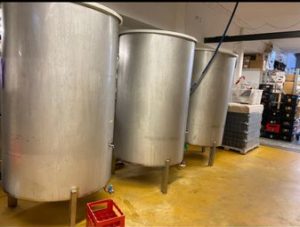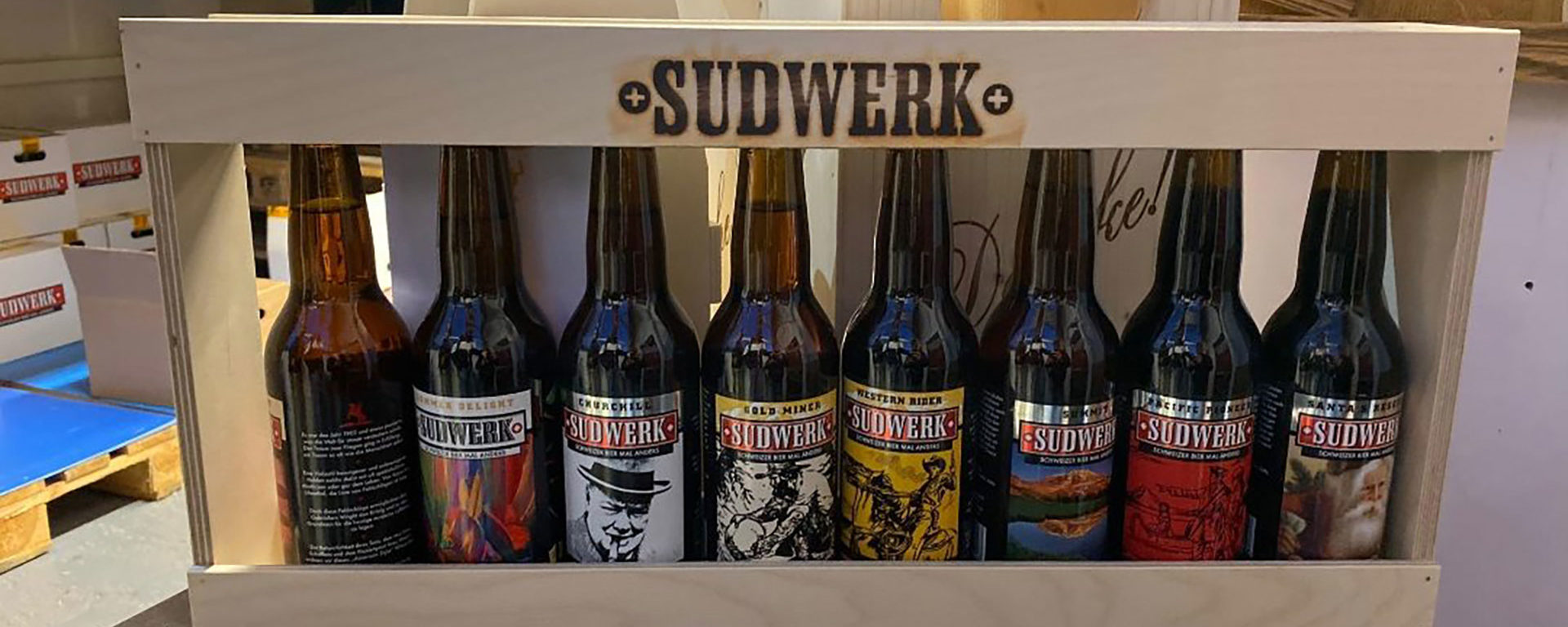Introduction
We all like to have a few beers afters a hard day of work. But have you ever wondered what the impact on the environment is?
We asked ourselves the exact same question. For that reason we went to a local microbrewery and interviewed the headbrewer Martin. It was a really interesting time there. Therefore we can only suggest that you go visit the brewery if you get that chance.
The data of this small field research was collected during the visit of the Sudwerk Brewery on the 6th of December 2020 in Pfäffikon Zurich, Switzerland.
The director of the company and controlling shareholder, Martin Halter, has taken his time to show us the long procedure of this delicious beverage (of course over a beer).
The Sudwerk Brewery is a microbrewery with 2 employees. It brews around 7’000’000 litres of beer per year in the overfermented sort of brewing (no lager beer). The Brewery was founded in 2011 by an American citizen.

Interview
1. What kind of ingredients are there for a beer?
A large amount of water, with barley malt (Gerstenmalz), with hops and yeast (Hefe).
2. Where are the resources from?
In winter the water is from Pfäffikon, in sommer the community of Pfäffikon gets its water from the lake of Zurich. The chalk level of this water is low.
For the taste development of the beer its more advantageous to use water with a higher chalk level.
The barley malt is directly imported from the UK. The Hops origins via trader, who is in the UK, from the USA. The Hops will be harvested, processed and packaged on the west coast in autumn. From there the products will be transported to Canada. In the cold months of winter, the hops will be transported via train to the east coast. After that they will be loaded onto ships and freighted to Antwerp. Because of that the temperature sensitive hops will be gently and ecologically transported.
The dry yeast (Trockenhefe), which is used for the fermentation of the beers of Sudwerk, is produced in France and imported via Germany. There is no direct import possible.
3. Why not in Switzerland?
In Switzerland there is no malting which would fulfill the demand. The reason is that during the cartel time [about what time?], the industry didn’t produce it on their own. They just imported it.
The hops are only planted in 3 different locations in Switzerland. It covers only about 10 % of the need. Furthermore, the Swiss only have 3 different kinds of hops, which isn’t interesting for the Craft Beer Industry.
4. How are the products delivered to Switzerland?
From England the products are delivered with lorries to Switzerland. From the USA with ships. For more information please check question 2.
5. How long does the brew process last for 1 beer?
Around 20 days.
6. Why are there different colours of beers?
Because of the different roasting of the malt.
7. Does the Sudwerk Brewery pay attention to their CO2 emissions?
The Sudwerk Brewery tries to get along with as less CO2 emissions as possible. The CO2 that is created during the fermentation process can’t be used due to technical issues. Concerning that the brewery needs to buy around 900 kgs of CO2 for around 1’500 Swiss Francs.
8. How much energy do you need for 1 brewing process?
To boil (1.5 hours to 2.5) the flavours (malts/hops) and afterwards to cook for another hour you need around 36 kWh. For the cooling of the brew you need regular water through a heat exchanger. The water can be reused for the next brewing procedure. Per year the brewery needs around 36’000 kWh (Lighting, Cooling, Heating, etc.)
9. How much CO2 does 1 beer need?
Depending on the style of the beer, during the filling of the bottles, some CO2 might be added to the beers. One wheat beer uses around 6.5 – 9 grams per litre whereas a Porter or Stout only between 3.4 and 4.5 grams per litre to be saturated.
Here is the life cycle of a glass bottle in Switzerland since we can’t really answer how much CO2 is in a bottle of beer.
Conclusion
We learned a lot of new things from this project. In the beginning we didn’t have a single clue how to start this off. With time we kind of figured it out. From then on we worked hard. The interview itself was a really interesting experience since we could try some different sorts of beer during it. We learned a lot about the ingredients of a beer as well as the energy behind it. For example there is a lot of grey energy in brewing. Since there are a lot of things a normal person doesn’t know about the brewing process. There is the heating in winter for example.
We learned a lot for our real life as well. For example that we need to plan everything. We ran behind dates as we didn’t really do any planning. This wasn’t an effect on the environment but on our project.

All the pictures were taken by Deia of the marketing team.
Greetings Simon and Michel
Sources
Martin Halter for the interview (6th of December in Pfäffikon Zurich)
Deia from the marketing team for the photos
Sudwerk Biere (sudwerk.ch)

On-topic posts on dontwastemy.energy
Maritime Transportation Challenges
The life cycle of a Swiss glass bottle
The «yellow» side of aluminium
The life cycle of an aluminum can
☷ See the project teams here »
☵ Some words about the contributions »
☴ Our sponsors and partners » (the-horse.education)

Hello Simon and Michel
Thank you for your interesting text. Your work was well researched, it is a very informative manuscript.
I especially liked how you explained why it isn’t interesting for the Craft Beer Industry to procure all the ingredients here from Switzerland. I didn’t knew that there are only three different locations where hops is planted.
It would have been interesting to know how much CO2 emission does all those import makes. Another fascinating question would be, is there a big difference for the environment between the glass bottles and the typical aluminum can.
In the conclusion you could make a part about your result, like a sentence where you answer your main question. “How do alcoholic beverages affect the environment?”
Greetings Jarno
Hi guys,
You have explained the brewing process very well, thank you very much for this interesting article!
I am astonished that so much hops have to be imported from the USA and that we cannot produce this here in Switzerland ourselves. The CO2 emissions, especially from transport, are considerable.
FYI: Being a former restaurant owner, we had Schützengarten beer from St. Gallen: it’s been delivered in 50 litre barrels, which were stored in the cellar; the beer was tapped from there and pumped to the buffet.